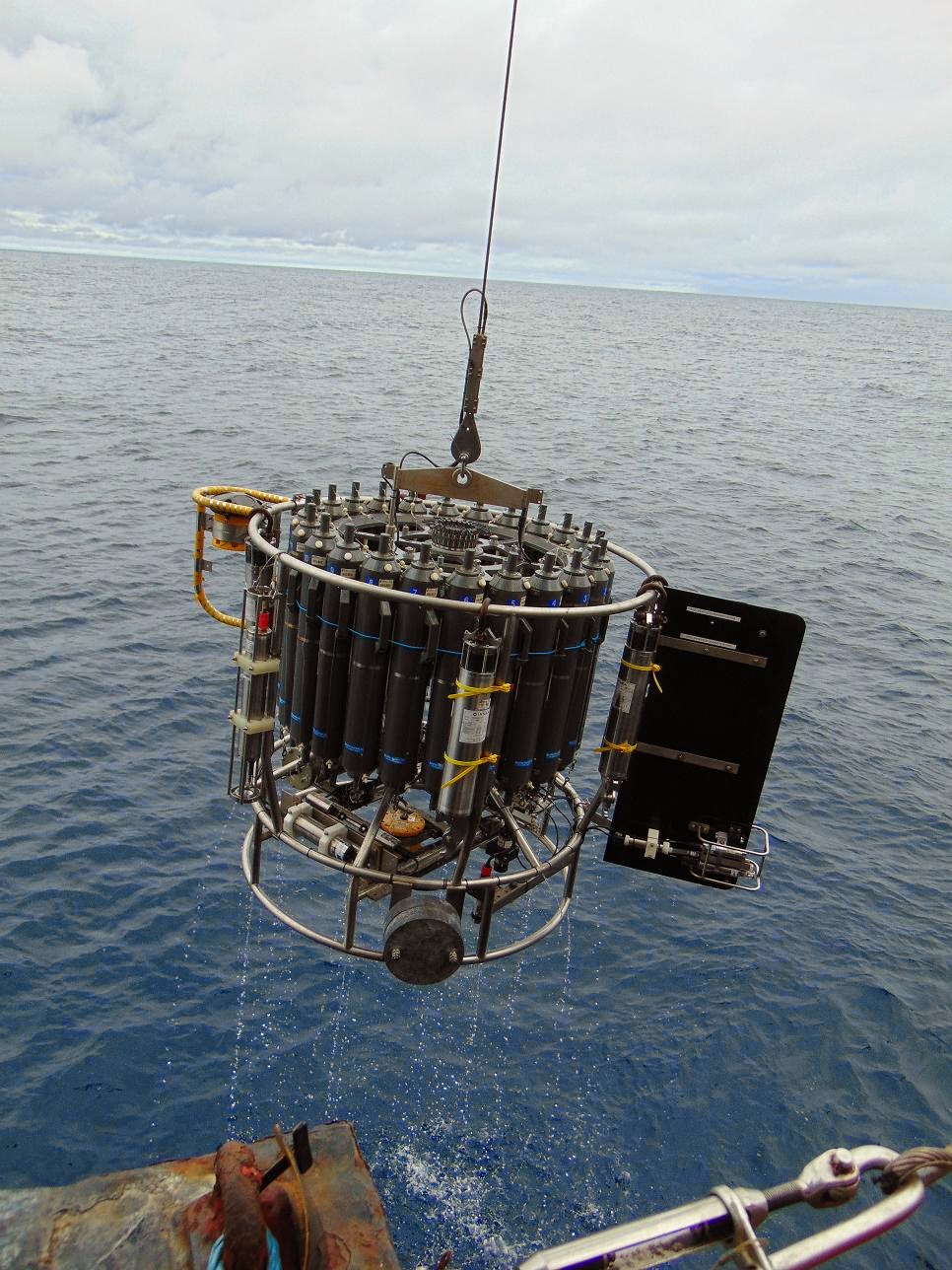After having left the coast of Panama, we have been steaming
into the Panama Basin for the past couple of days.
Since then, we have performed four CTD casts! CTD stands for
Condutivity-Temperature-Depth, and it is an instrument that measures these
properties of the water column (with conductivity giving salinity, and depth
coming from pressure measurements). As well as this, a carousel of ‘niskin
bottles’ is attached to the instrument, which collects seawater samples from
different depths. Other measuring instruments can also be added, including an
SVP (sound velocity probe) which measures the speed of sound in the water, and
devices which measure the oxygen content and turbidity among other things. All
in all it’s a pretty fantastic instrument!
 |
| The CTD being lowered over the side. The measuring instruments are attached to the metal frame at the bottom and the side, with the carousel of 24 bottles above (credit: Emma) |
The CTD is lowered over the side of the ship using the winch
system, right down to within meters of the bottom of the ocean. Once we passed
the edge of the continental shelf, this was down to ~3000 m deep, so a lot of
cable is needed. The continental shelf is where the ocean-covered continental
crust changes into proper oceanic crust, which has a lower elevation due to its
higher density. This leads to a relatively steep increase in depth over the
shelf. Often, there is increased upwelling of nutrient-rich water at continental
shelves, which generally means they’ll be more wildlife around. And sure
enough, we did see a few pods of dolphins leaping around the ship, though sadly too far away and quick for good photos.
 |
| CTD emerging at the surface (credit: Jowan) |
 |
| CTD being brought back on deck (credit: Jowan) |
Once the CTD is back to the surface, we take water samples
from the niskin bottles for analysis of oxygen and salinity content, and
sometimes helium content too. More about each of these will come in future
posts. It was strange thinking that as we were taking the samples from the first
bottles, we were being splashed with cold water (~6 °C) from over 2000 m deep in the ocean,
a place none of us will ever go (at least for now!). This contrasted to taking
the samples from the last bottle, which contained water from close to the
surface of the ocean and was at ~27 °C, warmer than the current air temperature
and made us want to go for a swim.
 |
| Taking water samples from the niskin bottles (credit: Jowan) |
No comments:
Post a Comment
Thanks for your comment!